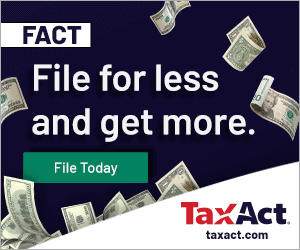Top Tax Deductions for Personal Trainers


File your taxes online with confidence.
As a personal trainer, you have a lot of expenses depending on how you run your business.
For example, if you train out of your car, driving to parks and client homes, you likely pay more for gas than normal. You also have to pay for liability insurance, new equipment, and rental space fees. Not to mention you probably have a variety of home office expenses.
Luckily, a tax deduction can help ease the financial burden of those expenses. As a self-employed individual, tax deductions are available to offset expenses by lowering your taxable income. Claiming the right deductions can ultimately help reduce your tax liability. And that may boost your refund when you file your tax return in the spring.
Common Tax Deductions for Personal Trainers
You’re considered self-employed even if you only train clients part-time. That’s why you can claim these business expenses come tax time. Here are the deductions you don’t want to miss:
Marketing: This includes website fees—think: hosting and any paid themes or widgets. Costs to create promotional materials, like flyers, business cards, t-shirts, and signs are also deductible. Don’t forget about the money spent on paid marketing efforts, like Facebook, Instagram or radio ads, as well as any direct marketing fees, such as pay-per-click advertising in search engines.
Education: Continuing education is required to maintain your certification, but it’s also considered a tax deduction to the Internal Revenue Service (IRS). That includes the cost of any online and offline courses, work conferences, and other educational materials specific to your profession, like books.
Fitness Equipment: Any exercise equipment you purchased throughout the year is tax deductible as long as it’s used with your clients and not just for personal use. For example, the new yoga mat you only use during Saturday morning classes with your friends doesn’t qualify. But the medicine ball, jump rope or ten-pound dumbbells you use with clients is deductible. That’s assuming you bought it this year.
If you purchased a much larger piece of equipment, like a treadmill, spin bike or weight machine, you’ll likely need to depreciate the cost of that item versus simply writing it off as a tax deduction.
Mileage: If you travel to train clients at their home or in a park, you can deduct up to 53.5 cents per mile driven to and from those sessions. That adds up if you train out of your car on a regular basis.
General Personal Trainer Tax Deductions
Office Supplies: If you run your business from your home, printing paperwork and managing client work from an office, you can deduct the cost of supplies needed to maintain that work. That includes notebooks, pens, staplers, ink cartridges, etc.
Office Space: As a personal trainer, this tax deduction can include two areas: the space in your home or any space you rent. The portion of your rent or mortgage payments, Internet bills, and utilities that pertain to your primary workspace can be written off as a home office deduction. You can also deduct the cost of renovations made to the space, so long as the items and area are used solely for your business.
However, doing so requires a considerable amount of recordkeeping and various expense calculations. Oftentimes, the easiest way to take the home office deduction is to use the simplified method. It lets you deduct $5 per square foot up to a maximum of 300 square feet for the portion of your home or office space used for business. At the maximum, that equates to a deduction of $1,500.
And, yes, you can also write off the fees associated with renting space at a local gym.
General Business Expenses: As a self-employed individual, you can deduct a wide variety of general business expenses. That includes the cost of business tax preparation services and bookkeeping, organization and club fees, and insurance payments.
Keep Track of Your Expenses
The key to making the most of your tax deductions is organization. Throughout the year, use a tool like Wave or Zoho to track all business expenses and income. These tools make it easy to input expenses as they happen or on a regular basis, like once a month. Some even have a mobile app so you can add an expense just by scanning your receipt. Keeping your expenses organized will help you get ready to take advantage of every deduction available.
You can also use an Excel spreadsheet to organize your expenses and income throughout the month. Just don’t delete the data when you’re done. It’s a great way to double-check your totals at the end of the year if something seems off.
Then, if you’re filing with TaxAct come tax time, all you have to do is follow the prompts. They’ll walk you through every possible deduction to make sure you catch each one.
Start Tracking Now
If you’re ready to take advantage of expense deductions this tax season, start tracking everything now. If you haven’t up to this point, set aside an afternoon to do so. Putting in the work now will pay off when the deductions add up to a better tax refund.






